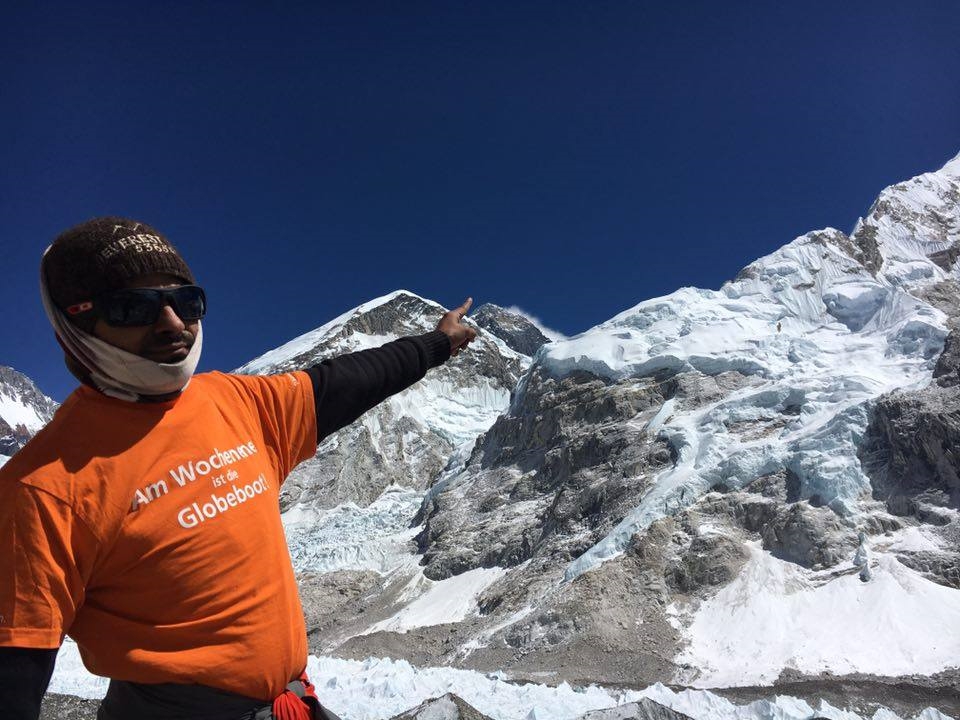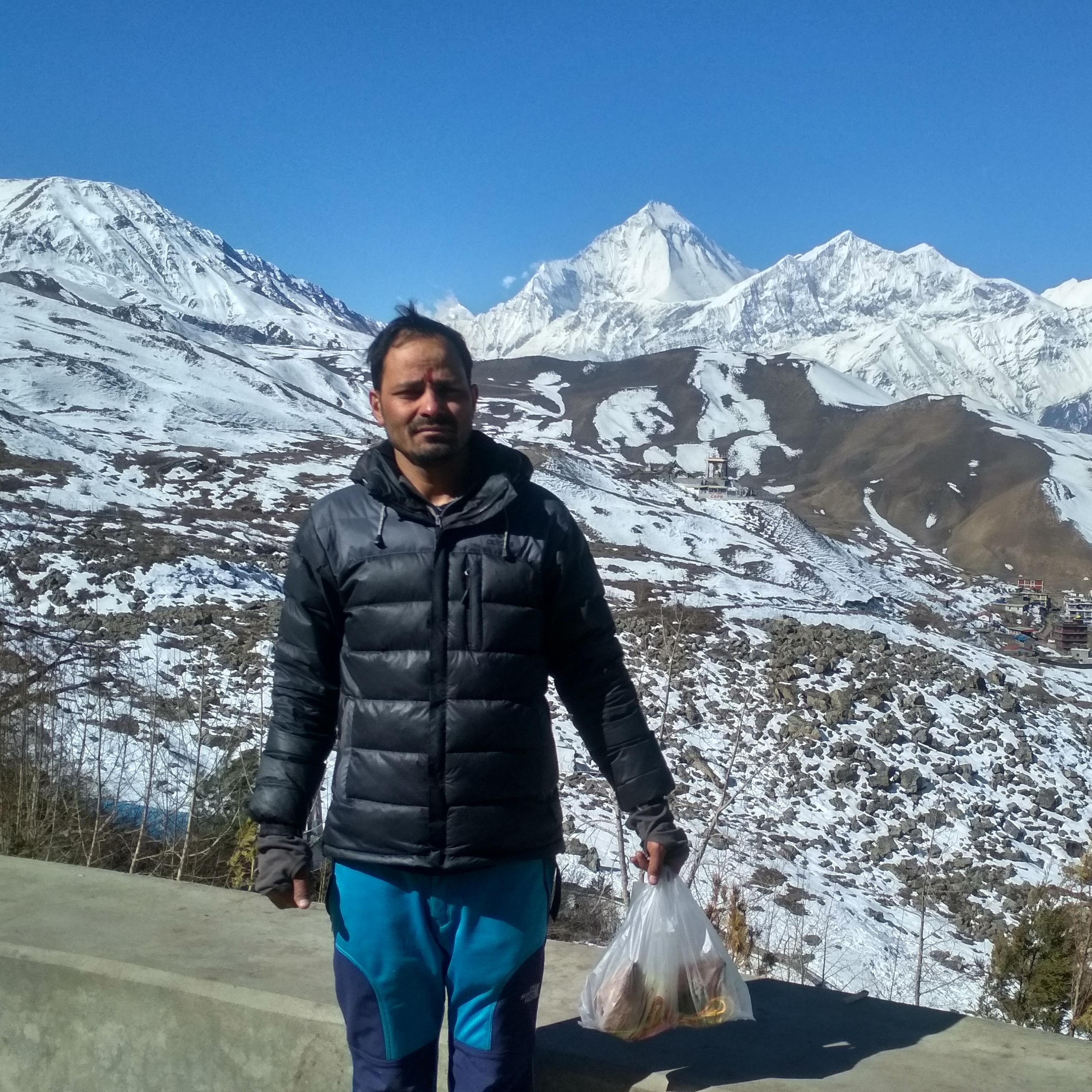Island Peak Climbing with Everest Base Camp Trek
Island Peak Climbing with Everest Base Camp Trek Highlights
- Breathtaking vistas of the Himalayan mountain range, which is home to several magnificent peaks, including Mt. Everest, Lhotse, Ama Dablam, and Nuptse.
- Positioned at the foot of EBC, the highest peak in the world (5364 M).
- Trek to Kala Patthar, one of the best locations to see Everest's sunrise.
- A well-liked climbing destination in the Everest region is Island Peak (6189).
- See multiple glaciers, the biggest of which is the Khumbu Glacier, located in the region.
- Visiting Tengboche Monastery, the most important Buddhist monastery (3867 m).
- Possibility of interacting with the Sherpas in the area, who are renowned for their rich cultural traditions and kind hospitality.
- Observing religious rituals, prayer flags, and blessings while at monasteries.
Mountaineering enthusiasts who wish to experience the exhilarating combination of reaching the iconic Everest base camp and submitting the accessible Island Peak Climbing with Everest Base Camp Trek in the stunning Himalayan region of Nepal are drawn to island peak climbing in conjunction with the Everest base camp trek. After a picturesque flight from Kathmandu to Lukla, the trek usually begins with a walk through the picturesque villages of Namche, Tengboche, and Lobuche, among others. You will cross suspension bridges, hike through verdant forests, and acclimate to the rising altitude throughout the journey.
A major accomplishment in and of itself, reaching Everest base camp provides breathtaking views of the surrounding mountains, including Mount Everest. Following your enjoyment of the breathtaking vistas, you will proceed in the direction of Island Peak. At an elevation of 6189 meters, Island Peak, also referred to as Imja Tse locally, is a stunning mountain peak that provides breathtaking panoramic views of the neighboring Himalayan peaks as well as an adrenaline-pumping experience for mountaineers. Since the peak looks like an island in a sea of ice when viewed from Dingboche village, Eric Shipton’s party named it Island Peak in 1951. Island peak is still the most popular option even after the peak’s name was changed to Imja Tse later in 1983.
While Island Peak Climbing with Everest Base Camp Trek is thought to be a difficult but reachable summit for climbers. Climbers who want to gain experience in Himalayan mountaineering and want to take on more difficult summits may find it to be a great option. Magnificent sweeping views of Ama Dablam, Nuptse, Lhotse, Mt. Everest, and other nearby peaks can be seen from the summit. It also offers a helpful overview of climbing at higher altitudes. In addition, certain technical and mountaineering abilities are needed for the ascent to Island Peak. Climbers need to be proficient with the use of ice axes, ropes, crampons, and other climbing gear. The path passes through crevasses, climbs steep snow and ice slopes, and crosses glaciers.
Reaching the summit of Island peak is an exhilarating experience and offers stunning views of the Everest region. After the successful climb, you will retrace your steps back to Lukla, concluding the trek.
Travel insurance
It is strongly advised that you get travel insurance before starting any trekking or climbing adventure, including reaching Island Peak and Everest base camp. The hike involves technical climbing and trekking at high altitudes, both of which can be hazardous and physically taxing.
Seek out all-inclusive insurance that addresses potential hazards related to high-altitude climbing, such as lost or stolen luggage, emergency medical costs, flight cancellation or delay, and helicopter evacuation. To fully comprehend the policy’s coverage and exclusions, make sure you read it carefully.
Best time to visit
The spring and fall seasons are ideal for combining an Everest base camp trek with island peak climbing. Clear skies, steady weather, and ideal trekking conditions are all present during these months.
Trekking is most enjoyable in the spring (March to May), when there is more sunlight, a rise in temperature, and longer days. The pre-monsoon season is when nature restores its once-lost splendor. Many different types of flowers, including magnolia, rhododendron, and other wild flowers, are in bloom.
For this trek, the autumnal season (September to November) is another ideal trekking time. Following the monsoon, the weather becomes comparatively stable, the temperature is pleasant, and the clear air provides great views of the mountains. Although it’s still warm in lower elevations and chilly in high mountains, daytime walking temperatures are at their most comfortable during the day.
Altitude sickness
Acute mountain sickness (AMS), commonly referred to as altitude sickness, can pose a risk on high-altitude excursions such as island peak climbing and Everest base camp treks. It happens as your body tries to adapt to the reduced oxygen content and lower air pressure at high altitudes.
It’s critical to stay hydrated and pay attention to your body in order to reduce the chance of altitude sickness. When altitude sickness (AMS) symptoms worsen and include headaches, nausea, dyspnea, elevated heart rate, and uneasiness, it’s critical to get down to a lower altitude and get medical help.
Guide and porter
Hiring a qualified guide and porter is strongly advised for island peak climbing combined with the Everest base camp trek. As a result, Nepal Holiday Treks and Tours Pvt. Ltd. is always available to provide you with a licensed, highly skilled, amiable, and insured trekking guide and porter.
By hiring a porter, you can hike lighter because they will lift your bulky gear. In a similar vein, a guide will be of great assistance, help you navigate the trails, watch out for your safety, and provide you with insights into the environment and culture of the area.
Food and Accommodation
Our guide will select the best tea house/lodges for you to stay at during the trek based on availability and their experience. There are twin-sharing options for rooms. There are two beds, blankets, and sometimes shared bathrooms in each room. We promise to put you up in the greatest teahouse that is open, with breathtaking views of the surrounding landscape and mountains.
Tea shops and lodges serve meals that are typically a combination of western and Nepalese cuisine, including noodles, pasta, soup, and snacks, as well as dal bhat (rice and lentil soup).
Island Peak Climbing with Everest Base Camp Trek Itinerary
Arrival at Kathmandu and Transfer to Hotel
Sightseeing at Kathmandu Valley
Fly from Kathmandu to Lukla then Trek to Phakding
Trek from Phakding to Namche
Acclimatization Day at Namche Baazar and Hike to Everest View Hotel
Trek from Namche to Tengboche
Trek from Tengboche to Pheriche
Trek from Pheriche to Lobuche
Trek from Lobuche to Gorakshep via Everest Base Camp
Trek from Gorakshep to Lobuche via Kala Patthar
Trek from Lobuche to Chhukung via Kongma-la Pass
Trek from Chhukung to Island Peak Base Camp
Preparation for Climbing and Training at Island Peak Base Camp
Island Peak Summit and Back to Base Camp
Trek Back from Islang Peak Base Camp to Pangboche
Trek Back from Pangboche to Namche
Trek Back from Namche Bazzar to Lukla
Fly Back from Lukla to Kathmandu
Departure at Tribhuvan International Airport
Island Peak Climbing with Everest Base Camp Trek Inclusions
What's included
- Airport pickups and drops in a private vehicle
- Accommodation in Kathmandu with breakfast
- Teahouse accommodation during the trek
- Tented accommodation during the climb
- All meals (breakfast, lunch, and dinner) during the trek and climb
- Domestic flights (Kathmandu- Lukla -Kathmandu)
- English speaking, trained and experienced trekking guide(leader), climbing guide (leader) and assistant guides
- One porter for two trekkers
- Mountaineering (climbing) equipment
- All government and local taxes
- Staff costs including their salary, insurance, equipment, domestic airfare, food, and accommodation
- Down jacket and sleeping bag
- All necessary paperwork; trekking permits and Island Peak climbing permit
Add-ons
What's not included
- International airfare and visa fees
- Lunch and dinner in Kathmandu
- Personal expenses of bar and beverage bills, wifi, hot shower, bottle of water, extra porters, laundry or any other things which are not mentioned by the company
- Your trekking gears and extra nights in a certain destination
- Your travel insurance which should include the emergency rescue
- Tips for your guide and porters
- Entrance fees during the sightseeing
- Extra expenses due to any event such as strikes, weather conditions, or flight delays
Island Peak Climbing with Everest Base Camp Trek FAQs
How fit should one be to join an Island Peak climb?
Participants in Island Peak climbs should be reasonably fit and have a lot of endurance. This usually entails strength training to get muscles ready for the rigors of trekking and climbing, in addition to regular cardiovascular exercise like cycling, jogging, or hiking. Participants should also be able to walk with a backpack for several hours each day and have previous high-altitude trekking experience. To make sure climbers are suitably prepared for the physical challenges of reaching Island Peak, specific training plans designed for the ascent are advised.
Which are the best seasons for the Island Peak Climb?
The pre-monsoon (spring) season, which runs from April to May, and the post-monsoon (autumn) season, which runs from September to November, are the best times to climb Island Peak. Clear skies and comfortable temperatures characterize these times of year, when the weather is usually more stable and ideal for climbing. The Himalayan landscapes are particularly breathtaking in the spring and autumn, and these seasons provide a higher chance of a successful ascent.
What type of lodges and guest houses are provided during the route and the climb?
Trekkers usually stay in tea houses or lodges along the route while climbing Island Peak. The level of comfort and amenities offered by these accommodations varies, with basic rooms with shared bathrooms and more luxurious options with private rooms and attached bathrooms. The majority of tea houses serve international, Tibetan, and Nepali food and provide a comfortable and convenient location to rest during the hike.
From what altitude are major mountaineering expeditions typically launched?
Depending on the mountain and route, base camps for major mountaineering expeditions in Nepal are usually situated at elevations between 5,500 and 5,400 meters (16,400 and 18,000 feet) above sea level.




